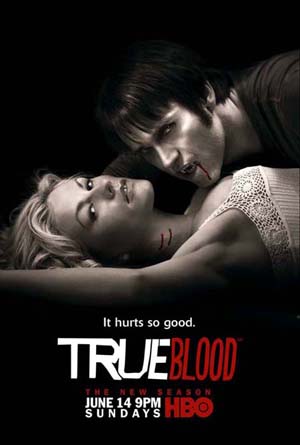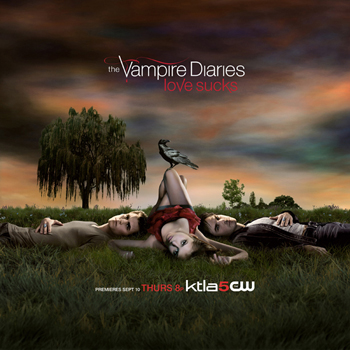 |  |  |
 |  |  |
True Blood, Twilight, and Vampire Diaries all follow very similar plot lines. In True Blood, a woman named Sookie meets a vampire named Bill who she falls in love with despite the many instances where she must risk her life to save him or vice versa. The entire community places judgment on Sookie because she is dating a vampire, yet she stays confident in her decision to follow her heart. In Twilight, a high school girl named Bella meets a boy named Edward who eventually shares his secret of being a vampire with her. They fall in love even though there are many instances in which Bella's life is put in danger because of other vampires. Edward's identity as a vampire is a secret to all other humans with the exception of Bella. In Vampire Diaries, a high school girl named Elena meets a boy named Stefan who eventually shares his secret of being a vampire with her, although the rest of humanity has no idea. Their relationship is very rocky due to conflicts with other vampires, including Stefan's brother Damen, but in general, Elena and Stefan meet the same fate as Bella and Edward and Sookie and Bill by risking everything for love. It is the fact that all three vampire related media have the same plot line that makes the interrelated analysis of the vampire phenomenon so strong. It seems unusual that a large majority of American society could be drawn to three shows with all similar plot lines, yet somehow all of these shows have flourished from their premieres through present day airings.

|
All three examples have slogans that incorporate themes of death, which helps to reinforce the sexualization that is present in the images. In the Twilight slogan "When you can live forever, what do you live for?" the aspect of death is clear because of the reference to eternal life. The sexualized aspect of this slogan can be understood based off the severity of the question itself. There is nothing more powerful than eternal love, and love seems to conquer death in a way that makes death look less scary. From body positions, it is clear that both Bella and Edward are attached to one another. From this, it seems plausible to infer that they must be living for each other. This inference of sexualization is not based off of knowledge of these characters, but the way in which the two characters hold onto each other and are physically connected. The slogan is what reinforces this connection between characters and allows for the understanding of eternal love. In the True Blood slogan "It hurts so good" the aspect of death can be associated with pain or "hurt". This slogan presents pain in a positive way, by making death into something not as gruesome as it has been portrayed in the past. The sexualized part of this slogan is represented based off of the image in the poster. The positioning of the two bodies seems to place Bill on top of Sookie. This develops the question of what exactly "hurts so good", forming a direct comparison between death and sex. Vampire Diaries represents the last slogan, which is "love sucks". It is extremely simple and uses a play on words. The love part of the slogan represents the sexualized aspect, because love is actually represented by lust in this image. The visibility of much of Elena's chest and legs are sexualized features of her body, which in turn creates a lustful scene, not a loving scene. "Sucks" can be interpreted as either an adjective for something really bad, or verb. For vampires, sucking has the potential to lead to death which really does suck. All of these slogans in correspondence with the images create a sense of themes of sexualization and death. Intertextuality is important to this part of the analysis, because "one discursive image or text depends not only on that one text or image, but also on the meanings carried by other images and texts" (Rose 142). As a whole, it is possible to see the importance of both the images and slogans in portraying an understanding of the two television shows and one movie. |